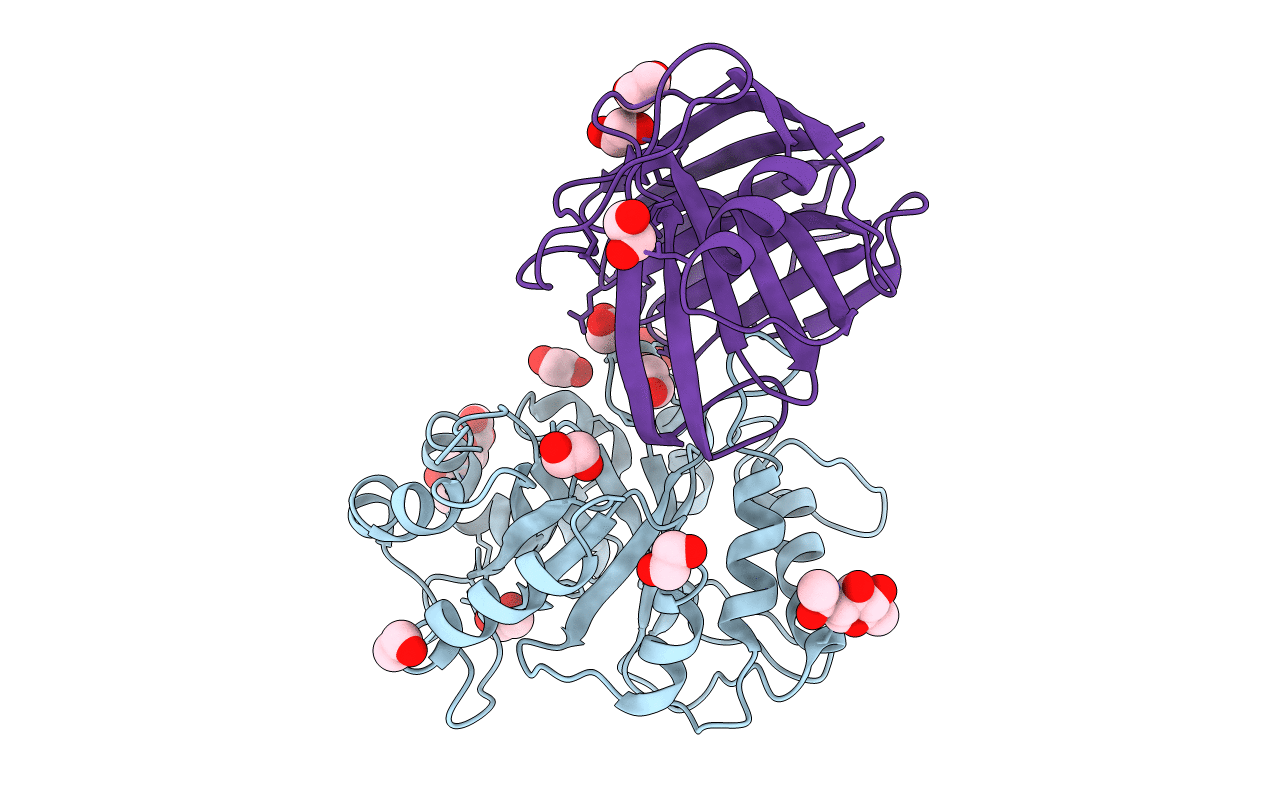
Deposition Date
2004-05-24
Release Date
2004-07-20
Last Version Date
2024-10-30
Entry Detail
PDB ID:
1TE1
Keywords:
Title:
Crystal structure of family 11 xylanase in complex with inhibitor (XIP-I)
Biological Source:
Source Organism:
Penicillium funiculosum (Taxon ID: 28572)
Triticum aestivum (Taxon ID: 4565)
Triticum aestivum (Taxon ID: 4565)
Host Organism:
Method Details:
Experimental Method:
Resolution:
2.50 Å
R-Value Free:
0.27
R-Value Work:
0.20
R-Value Observed:
0.21
Space Group:
P 43 21 2


